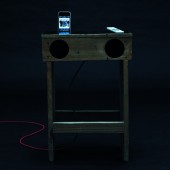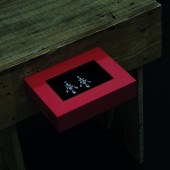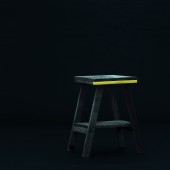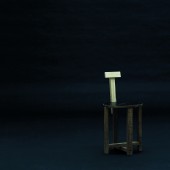
| THE AWARD |
| CATEGORIES |
| REGISTRATION |
| SUBMIT YOUR WORK |
| ENTRY INSTRUCTIONS |
| TERMS & CONDITIONS |
| PUBLICATIONS |
| DATES & FEES |
| METHODOLOGY |
| CONTACT |
| WINNERS |
| PRESS ROOM |
| GET INVOLVED |
| DESIGN PRIZE |
| DESIGN STORE |
| THE AWARD | JURY | CATEGORIES | REGISTRATION | PRESS | WINNERS | PUBLICATIONS | ENTRY INSTRUCTIONS |
Prostheses and Grafts Home Furniture by Studio Mk27 |
Home > Winners > Design #23349 >Interview |
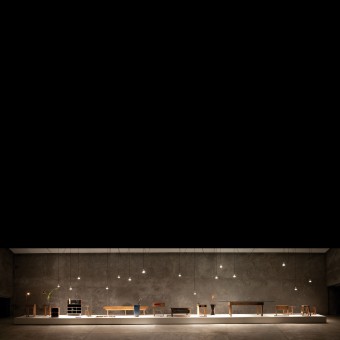 |
|
FS: What is the main principle, idea and inspiration behind your design?
SM: The extremely necessary and art Gabriel Kogan “I don’t understand any of this. For me popular art is non-existent. Out of necessity people do things that are related to life” Lina Bo Bardi Popular design in the XXI century has suffered in the midst of the accelerated urbanization and globalization of the capitals. The folkloric object, as well as the local know-how itself, has been swallowed by a torrent of information in the contemporary world. Among the glimmer of exceptions which have quickly disappeared, still alive is the nostalgic imaginary existence of a popular urban culture. More than just the mystification of an autonomous production, there exists the theoretical desire to formulate an authentically national design, a Brazilian design. Nonetheless, a careful examination of these remnant popular objects indicates to us a characteristic that is surprisingly universal. Contrary to modern thinking, the people’s design does not emerge from a maximum economy of the material, but rather from something delicately different: the solutions arise from the simplest extremely necessary work. If, on the one hand, the raw material of this production is almost always derived from that which has been discarded, from junk, on the other the form of constructing and manipulating the material is an ingenuity about the functionality of the object, in which the finished product holds a memory of the very material that is now in a useful form. This exhibit presents a vestige of the popular culture found in large cities. The furniture was built by civil construction laborers, in the city of São Paulo, for their own use. They are pieces, abundant at the sites, almost always made from the discarded wood of the project. The furniture is composed of pieces that are in themselves finished, functionally perfect. However for this exhibit, they are not displayed in their whole form, but rather with small interferences meticulously executed by an artisan. In any one object there are opposing things juxtaposed, the design of necessity and art, in a manner that exposes both more clearly. The furniture of the project becomes, then, that which it was not: precious and unique pieces. But through this transformation, from small grafts, the rough and perfectly functional nature of these pieces is revealed to us; and the painstaking and protracted grafting, is the very exception. For these interferences there was a deliberate search for the use of industrial materials that demonstrate the rusticity of the discarded wood and, in contrast, the precision of metal. In this way, a distant discourse is summoned about the relation between industry and life, between handicrafts and function, which are in the origins of modernist thinking. Perhaps this exhibit hopes to be a testimony of know-how and practices in extinction.
FS: What has been your main focus in designing this work? Especially what did you want to achieve?
SM: RE-doing everything: imaginative competence and the spontaneous design of civil construction laborers Maria Cecilia Loschiavo An unexpected email from Mariana and a fortuitous meeting with Gabriel brought me the news about this opportune exhibit. I am inclined to agree with the poet: “The random will protect us”. The showing of this 15-piece collection is but a small sample of the extraordinary repertoire of objects designed and constructed by some civil construction laborers in our country. Although displaced from their lócus vivendi, these pieces place before us the absolute imaginative competence of anonymous authors, revealing the functional strategies used to adapt to work and life within the confines of the project sites. On every day and at every site these workers improvised, producing “ingenuities” of every type: to sit, to rest, to heat food, to hang and dry clothing and to re-use the remnants and the rests of material that the very project discarded. The main characteristic of these pieces are the bricolage, the spontaneous design, the re-using of materials. In his book “The Savage Mind” Levi-Strauss explains that the “bricoleur (handyman) is someone who works with his hands and uses means (convoluted, cunning) diverse from those used by the artisan [...]. The bricoleur (handyman) can perform a large number of tasks, but, different than the engineer, he is not subordinated to the availability of materials or the tools designed and necessary for the proposed project” (Lévi-Strauss, 1966). This logic is manifested in the spontaneous design and the creative practice of finding the solutions applicable to the resolution of concrete problems in the context of a severe lack of resources” (Loschiavo dos Santos, 2000). The young architects and designers of StudioMK27 have always been mindful of the wealth of this design and had begun collecting some pieces originating from the sites of their own projects deciding, then, to introduce small modifications and to increment new elements which, in turn, offered new meanings and mew materiality to the pieces. In this way they promoted a re-doing of the objects from the sites, prolonging the short and brief existence of these pieces and initiating, as well, a new circuit of circulation and aesthetic fruition. It is important to emphasize that the addition of industrialized elements to the original pieces provoke an effect of contrasts and de-familiarization, an unexpected conflagration of the materials that connect numerous temporalities, identities and new functions. In most of the pieces constructed with the re-use of wood, there is some metal, some carbon fibers, some glass, causing us to re-think the transition of the products and the materials and, therewith, the very limits of the planet. The names of the pieces are suggestive and signal these new interactions: Radiola Table, Degustex Table, Alumiada Table, Bar-Wagon Trilili, Vai-te-mundo Hat-Stand, Toró Umbrella-Stand, Escambau Table, Quereres Table, Chamego Bench, Amostrado Bench, Luizão XV Bench, Dá Hora Table, Fulô Table, Bo Bench and Luzlino Table. These pieces illustrate the convergence of a series of themes: the possibility of using products for a longer period of time, without their deterioration; the diversity in re-using materials and products; the discarding and the imaginative force of spontaneous design in the answers and solutions in the quotidian of these civil construction laborers.
FS: What are your future plans for this award winning design?
SM: A show at FUMI galley in London
FS: How long did it take you to design this particular concept?
SM: 1 year
FS: Why did you design this particular concept? Was this design commissioned or did you decide to pursuit an inspiration?
SM: We pursuit it. We collected the furniture from the sites during a year or so, and then designed the prostheses and grafts.
FS: Is your design being produced or used by another company, or do you plan to sell or lease the production rights or do you intent to produce your work yourself?
SM: Alvaro Wolmer produces it and we sell it at www.micasa.com.br and www.fumigallery.com
FS: Thank you for providing us with this opportunity to interview you.
A' Design Award and Competitions grants rights to press members and bloggers to use parts of this interview. This interview is provided as it is; DesignPRWire and A' Design Award and Competitions cannot be held responsible for the answers given by participating designers.
| SOCIAL |
| + Add to Likes / Favorites | Send to My Email | Comment | View Press-Release |
